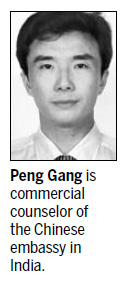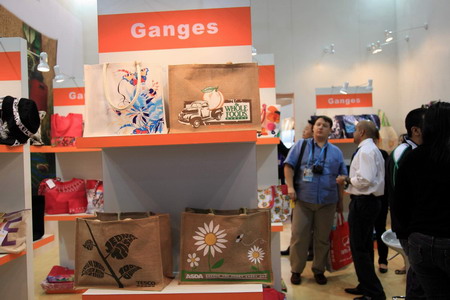China
Trading partners strive for balance
Updated: 2010-12-16 08:01
By Wang Xing (China Daily)
|
|

Asian giants are developing according to different models
NEW DELHI - China has not intentionally sought to have a trade surplus with India and has been looking for ways to increase purchases from the country, a top Chinese economic diplomat in India said.
Peng Gang, commercial counselor of the Chinese embassy in India, said China hopes to develop a more "balanced" and long-term trade relationship with its neighbor.
"We hope to promote a trade relationship with India that is more balanced and thus tenable," Peng said.
He said the Chinese and Indian economies are "more complementary than competitive" and the two countries, which were less affected by the financial crisis than others, should intensify cooperation with each other at a time when the major developed economies are still struggling to recover.
China is India's largest trading partner. This year, bilateral trade between the two countries is expected to reach $60 billion, up from $42 billion last year.
Breaking down last year's trade figures, India imported $30.8 billion in goods from China and exported $11.6 billion.
India complained that it has faced technical obstacles in selling goods to China.
However, Peng argued that China's trade surplus with India is largely due to the different economic structures and development patterns of the two countries.
According to Peng, China has sought to increase imports from India since 2008, when the Ministry of Commerce organized a trade fair for South Asian countries in Kunming, Southwest China's Yunnan province, to help them promote their products.
He said during Premier Wen Jiabao's three-day visit to India, China is expected to sign more than 30 deals, including agreements to purchase iron ore, biochemical products and fabrics from India.
Adopting different economic development patterns, China and India have built up their own positions of strength in the world economy since instituting economic reforms. Over the past 30 years, China established itself as a powerhouse in manufacturing and the construction of infrastructure, while India became a specialist in software and IT services.
"The economic structures of China and India are in fact more complementary than competitive," Peng said. "If we could combine China's advantages in hardware and India's in software, for example, we could make a real difference in the world."
India and China are the world's most populous countries and together account for more than a third of the world's population. The two countries also have a long history of conducting trade and cultural exchanges over thousands of years.
However, ties between the two countries have recently been damaged by mistrust that has developed over some issues, such as territorial disputes and employment visas.
Peng said he expects an expanding businesses partnership and deepening understanding between the people of China and India will help the two countries to overcome their political differences.
China Daily
Specials

President Hu visits the US
President Hu Jintao is on a state visit to the US from Jan 18 to 21.

Ancient life
The discovery of the fossile of a female pterosaur nicknamed as Mrs T and her un-laid egg are shedding new light on ancient mysteries.

Economic Figures
China's GDP growth jumped 10.3 percent year-on-year in 2010, boosted by a faster-than-expected 9.8 percent expansion in the fourth quarter.
